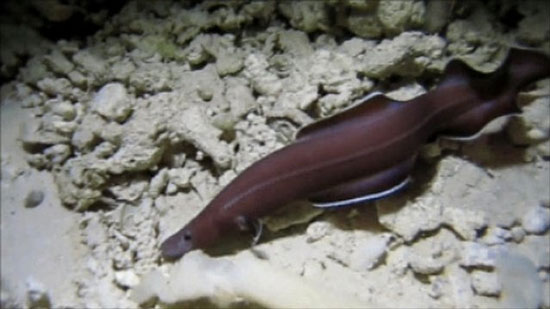Detecting eels 'living fossils' in the Pacific Ocean
The group of American, Palau and Japanese scientists discovered the new type of eel, known as the 'living fossil', at the bottom of the Pacific Ocean.
This type of eel has the scientific name Protoanguilla.

Protoanguilla eel has an evolutionary history over 200 million years (Photo: BBC)
Scientists used a 18 cm Protoanguilla fish, which was raised from a cave in Palau, as a specimen. Genetic analyzes show that this is an eel, although its characteristics are very primitive.
Scientists say: 'This fish is even more primitive than the oldest major fossil fish found, indicating it represents a living fossil'.
To distinguish it from the modern eel species, scientists have drawn an eel family biological plant, showing that this is an independently developed eel species over the past 200 million years, originating in the Great early Trung Sinh, when dinosaurs began to dominate the planet.
- Why don't planes often fly across the Pacific Ocean?
- Eel bends like a hair at the bottom of the sea
- Now science knows what is living in the 'desert' in the middle of the Pacific
- Eels - Sex changing animals
- Detecting fossils of 2 new horned dinosaurs
- Discovered a huge gold store at the bottom of the Pacific Ocean
- Detecting ancient whale fossils with strange shapes
- Discover dinosaur fossils like real Loch Ness monsters
- Video: Hundreds of eels rise and disappear under the seabed
- French athletes swim 8,850km across the Pacific
- Video: How deep is the ocean?
- The deepest fish in the world
 Surprised: Fish that live in the dark ocean still see colors
Surprised: Fish that live in the dark ocean still see colors Japan suddenly caught the creature that caused the earthquake in the legend
Japan suddenly caught the creature that caused the earthquake in the legend A series of gray whale carcasses washed ashore on California's coast
A series of gray whale carcasses washed ashore on California's coast Compare the size of shark species in the world
Compare the size of shark species in the world